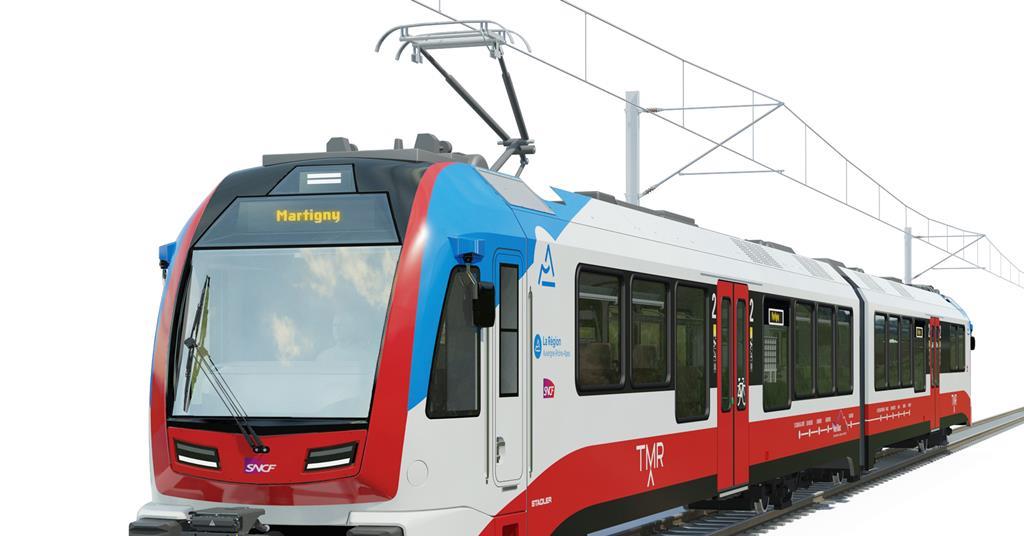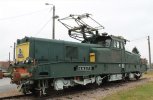LOL The Irony
On Moderation
Aren't the Acelas also fitted with shoes?You are correct, 18 x GE P32AC-DM, with Metro North running another 31 of them, and LIRR running 20 EMD DM30AC 'dual-mode' locos.
Aren't the Acelas also fitted with shoes?You are correct, 18 x GE P32AC-DM, with Metro North running another 31 of them, and LIRR running 20 EMD DM30AC 'dual-mode' locos.
20 DM30ACs were indeed built for the Long Island Rail Road, but only 17 remain in service.You are correct, 18 x GE P32AC-DM, with Metro North running another 31 of them, and LIRR running 20 EMD DM30AC 'dual-mode' locos.
Came here to mention the Staten Island Railway. It's ties to the city's main subway network is strengthened by the use of modified subway stock, namely the R44s dating from the early 1970s. They were retired early from the main system between December 2009 and September 2010 due to structural issues with the car bodies and were replaced by the R160s, while the remainder of the Staten Island fleet is slated for replacement by a variant of the R211 order (specifically, the R211S) starting in 2023. Incidentally, the remaining R44s are now the oldest 'R-Type' stock left (at 49 years of age) since the last R32s were officially retired this past January.An odd example is the Staten Island Railway in New York City. While commonly classified as an urban rail network and often associated with the city's subway system, the third-rail electrification of the network dates back to when the service was a mainline railway operated as part of the Baltimore & Ohio.
The LBSC?Whilst I know the OP asked for no metros, Line 2 of the Lausanne Metro is an interesting one as it was actually converted from OHLE to third rail when it was rebuilt from a rack railway in the late 2000s. Are there any other examples of lines being converted from OHLE to third rail rather than the other way round?
Whilst I know the OP asked for no metros, Line 2 of the Lausanne Metro is an interesting one as it was actually converted from OHLE to third rail when it was rebuilt from a rack railway in the late 2000s. Are there any other examples of lines being converted from OHLE to third rail rather than the other way round?
The other one that comes to my mind is the Hamburg S-Bahn (which originally used the same electrification syatem as the LBSC)The LBSC?
The Yellow Line in Chicago (also known as the Skokie Swift) did use overhead until the early 2000s on part of the route - the section heading into Howard was always operated with third rail traction.The other one that comes to my mind is the Hamburg S-Bahn (which originally used the same electrification syatem as the LBSC)
Also I think Bury-Holcombe Brook - an oddity, it ended up reverting to steam, before being closed.
Also, I think - don't know details - parts of the Chicago L used to use overhead (600v dc with trolley poles)
If you still have that photo, it and others would be welcome in the history & nostalgia sectionDad took one photo.
no their entire route has OHLE so they just use that, Penn is Dual electrified with both third Rail and OHLEAren't the Acelas also fitted with shoes?
Holmenkollbanen of the Oslo metro was converted to third rail around 10 years ago. https://en.wikipedia.org/wiki/Holmenkollen_LineWhilst I know the OP asked for no metros, Line 2 of the Lausanne Metro is an interesting one as it was actually converted from OHLE to third rail when it was rebuilt from a rack railway in the late 2000s. Are there any other examples of lines being converted from OHLE to third rail rather than the other way round?
The pioneer ex-NER Shildon-Newport 1500V dc OHLE system was abandoned in 1935 and reverted to steam haulage. Across the pond, the Norfolk & Western 11kV ac OHLE system was abandoned in 1950 after 35 years and went back to steam, following line relocations and a new summit tunnel to reduce the gradients.Also I think Bury-Holcombe Brook - an oddity, it ended up reverting to steam, before being closed.

Aside from the risk of gapping a locomotive...Arguably it's easier to combine 3rd rail with level crossings than OHLE is, because OHLE needs its level raised to allow tall vehicles to pass underneath. Take a look at Foxton (Cambs) where the railway crosses the A10 as an example - if you look at this video, you'll see the pantographs are at full stretch.
Whereas 3rd rail is just terminated a few feet short of the crossing.
...which is why the BR class 71 and earlier SR CC1/CC2 (+BR 20003) locos had a flywheel energy storage 'booster' system to alleviate that situation.Aside from the risk of gapping a locomotive...
Not really. The French took the German 20 kv 50 Hz system (the 1936 Höllentalbahn scheme between Freiburg and Neustadt) as a template after World War II, and installed it on the Aix-les-Bains - La Roche-sur-Foron line in 1951. I think they dismantled the German equipment and took it as war reparations. They converted it to 25 kV in 1953. The section between Valenciennes and Thionville began operation in July, 1954, and in May, 1955, the French Railways invited an international group of railway engineers to a conference at Lille at which they presented the results of nine months' operation of the new system. These showed not only big savings in the cost of the fixed equipment but that, contrary to earlier expectations, the AC locos were cheaper and lighter than their DC equivalents. The results of this conference fired the imagination of railway engineers worldwide. and high voltage 50 Hz AC electrification was generally accepted as the system for the future in those countries not already deeply committed to one of the other forms of electric traction. On 6th March, 1956, the British Transport Commission announced their intention to adopt this system as a standard for future electrification in Britain, save in the Southern Region.Before 1981, the SNCF was entirely DC


